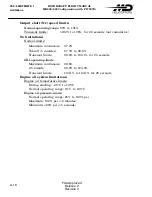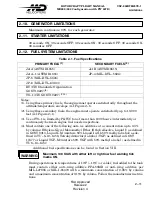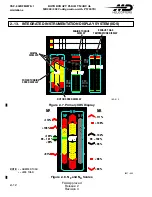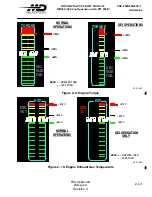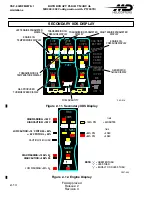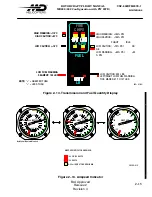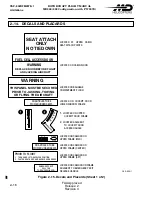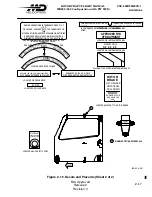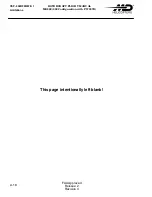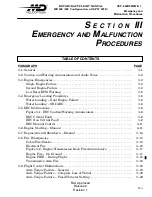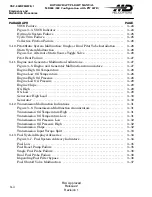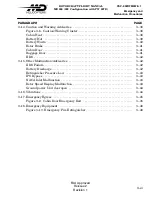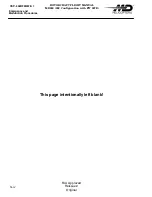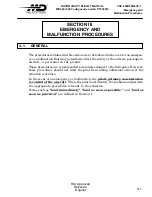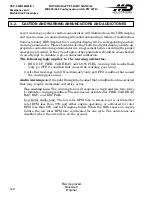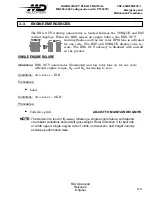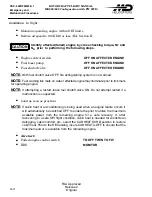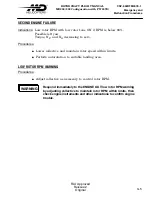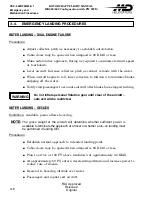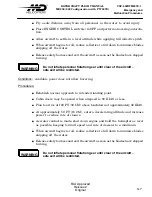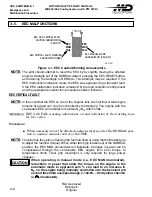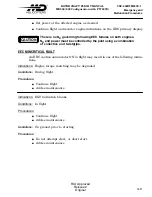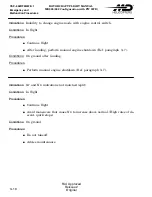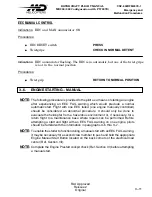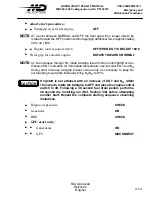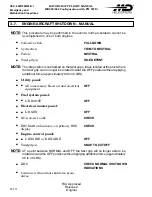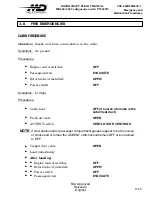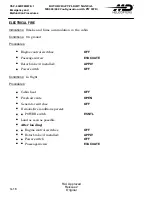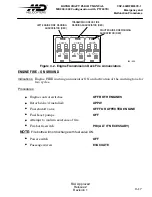
CSP
−
902RFM207E
−
1
ROTORCRAFT FLIGHT MANUAL
MD900 (902 Configuration with PW 207E)
Emergency and
Malfunction Procedures
FAA Approved
Reissue 2
Original
3
−
2
3
−
2.
CAUTION AND WARNING ANNUNCIATORS AND AUDIO TONES
A red warning or yellow caution annunciator will illuminate on the IIDS display
and in some cases, an audio warning will sound announcing a failure or malfunction.
Some secondary IIDS displays have a digital display with a corresponding caution/
warning annunciator. Pilots should insure that both the digital display and its ap
propriate caution/warning annunciator are in agreement before executing the proper
emergency procedure. If they do not agree, other parameters should be cross‐checked
in an attempt to validate a given abnormal indication.
The following logic applies to the warning advisories:
1. ENG OUT, FIRE, CAB HEAT, and LOW FUEL warning tick marks flash
(only go OFF if condition
that caused the warning goes away).
2. All other warnings turn ON continuously (only go OFF if condition that caused
the warning goes
away).
Audio warnings
alert the pilot through the headset that a malfunction has occurred
that may require immediate corrective action.
The warning tone: The warning tone will sequence a high and low tone twice
to indicate a warning condition. These tones are activated for FIRE, CAB HEAT,
BAT HOT, and EEC FAIL.
Low Rotor Audio tone: The low rotor RPM tone (a sweep tone) is activated for
rotor RPM less than 95% and either engine operating, or activated for rotor
RPM less than 88% and both engines failed. When the IIDS senses an engine
failure, the low rotor RPM tone is activated for one cycle. The audio tones are
disabled when the aircraft is on the ground.
Summary of Contents for MD900 Explorer
Page 4: ......

